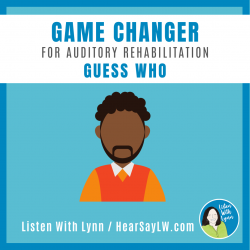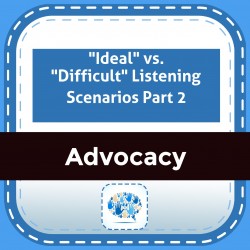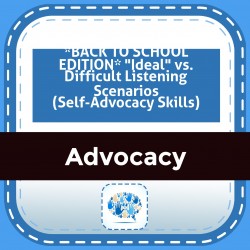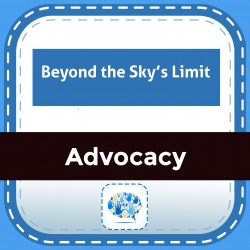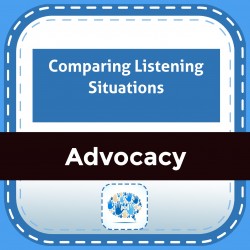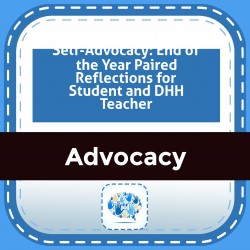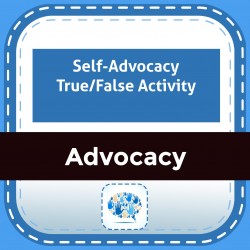Ability Levels
Categories
Resource Types
Age/Grade Range
CCSS
Anchor Standard
Speaking & Listening
Language
Reading
Auditory Rehab - Auditory Training GUESS WHO? Game
$ 6
Play Guess Who? the classic board game with an auditory spin using this Auditory Rehab Game Changer™. This activity is designed for individuals that are deaf and hard of hearing and for use in cochlea
...
cochlear implant rehabilitation for older children, teens, and adults.IDEAL FOR: Deaf & Hard of Hearing, Listening & Spoken Language, Auditory Training, Auditory Rehabilitation, Speech...The GUESS WHO Game Changer✤ is played with special directions and rules✤ challenges beginner and intermediate listeners✤ works in closed and bridge listening sets✤ practices identifying words in sets and within connected speech✤ focuses on taking turns, talking while advocating for hearing needs✤ encourages gameplay and practice at home with family and friends✤ practice can lead to communication success✤ is motivating and funGameChangers™➼ result in natural listening practice much different than contrived lists or online or programs.➼ allow for real-time modifications based on the player's auditory skills➼ fosters self-advocacy skills➼ improves communication confidence and successINCLUDES:a pre-game companion that prepares the Listener to play the gamefeatures practice exercises and activities.offers clear directions for therapists, teachers, a listening coach, family members, and friendsincludes listening tips and strategiesfollows an auditory hierarchyNOTE: The amount of practice necessary will vary before a listener is ready to play the game and is dependent upon the listener’s listening skills
"Ideal" vs. "Difficult" Listening Scenarios Part 2
$ 375
This product contains 15 self-advocacy scenarios for geared to help deaf and hard-of-hearing students. There are both "ideal" listening situations and "difficult" listening situations included in orde
...
r to help students develop self-advocacy and problem solving skills.Read each scenario and ask your student to determine if is an "ideal" listening situation or a "difficult" listening situation. If it is a difficult situation, what can be done to fix it?This product is best used with students who are in upper elementary grades and up. It contains both school-based and community-based scenarios.
FIllable Rubric - Cleaning Hearing Aids
$ 1
Why Use This?2025 - It's updated to include hearing aids with domesIEP goal sample includedIEP goal progress monitoring is done quickly!Students and parents can see progress visually on the rubricQuic
...
kly identify what needs more practiceUse this with two social stories related to cleaning your hearing aidsSocial Story - When Your Nose Runs: ENTs, Earmolds, and Earwax.Step-by-step presentation How to Clean Your Hearing Aids with Real Student Photos
New Teacher Bundle
$ 40
The New Teacher resource is an invaluable bundle packed with information you can use to explain the impact of hearing loss to your student's teachers and parents. 30 pages of resources. The New Teach
...
acher Combo includes:1. Impact of Hearing Loss on Listening, Learning, and Social Interactions (5 pages)2. Emailable, computer fillable SIFTERs (Preschool, Elementary, Secondary) (6 pages)3. Emailable, computer fillable LIFE-R Teacher Appraisal (2 pages)4. Emailable, computer fillable Access to Curriculum Inventory (ATCI) for General Education Teacher (3 pages)5. Children with Hearing Loss Miss More Than You Think (1 page)6. Listening Comprehension Exercise – Mother’s Aprons (1 page)7. Barriers to Listening – Visual analogies of listening in noise, reverberation, and distance (5 pages)8. Student Listening Challenges – Understanding the Missing Pieces (1 page)9. Attitude is Caught, Not Taught (teacher version) (1 page)10. Hearing Aid/Cochlear Implant Monitoring and the Law (1 page)11. Hearing Aid Monitoring – An Important Daily Activity (4 pages)12. Emailable Tips for Teachers (Early Childhood + K-12) Word version (15 pages)
*BACK TO SCHOOL EDITION* "Ideal" vs. Difficult Listening Scenarios (Self-Advocacy Skills)
$ 375
This resource contains 15 possible listening situations for DHH learners. Read each scenario and have your student decide if this is an "ideal" listening situation or a "difficult" listening situation
...
DHH Social Story: When My Nose Runs
$ 450
Additional Comprehension ActivitiesReading Comprehension QuestionsLists of tier 1 + 2 related vocabGame board to make it fun or help that wiggly off-task child stay focusedNew Concept for Older Kids:
...
What are “endonyms”This is a story to help children/students who wear hearing aids understand why they may go to the doctor and/or ENT more often than others. The story can be read for comprehension. It teaches new vocabulary and creates a wonderful language opportunity for students to better advocate for themselves at school, home, and the doctor/ENT office. This story was written with younger children and their families and older students who continue to come to school with blocked hearing aids and do not use an interpreter for language access.Service Activity for EI-ECSE Families & Home VisitsFor any family this story can be an important conversation starter, or reminder, to understand the language impact of even partially clogged hearing aids for their kid(s) who are not using signs. This can be demonstrated to parents by using a listening tube when their child’s hearing aid is plugged and cleaned and then having them listen again to the difference in clarity of language coming through the hearing aid to their child’s brain.Story Printable OptionPrint each two-page spread in landscape mode OR - Print a two-page spread but cut apart pages to show 1 page at a time. Spiral bind, 3-hole punch, or staple.Interactive Digital OptionPresent the book on a device or overhead projector. To play the digital version of the game click on the digital spinner link. Change the spinner to “3” numbers. Pick & move game pieces (pink, green, blue)QuestionsUse professional judgment when deciding on which comprehension questions to ask the student. *The advanced questions are marked with an * following the number.VocabularyTier 1 vocabulary Tier 2 vocabulary prefix Endonyms short nonfiction passage Endonym Activity Options ask students to research endodyms related to sick words show sick examples and ask them to find more
Beyond the Sky’s Limit
$ 299
A collection of comic strips revealing troublesome situations for teens with hearing loss. Includes commentary on how each humorous situation might be resolved.20 more situations and scenarios that m
...
mix humor with compassion in negotiating social communication.More antics and advocacy for teens and tweens with hearing loss.
Comparing Listening Situations
$ 5
This interactive Google Slides activity asks students to evaluate 4 listening situations (presented in pictures and short descriptions) and rate them on a scale according to listening difficulty. Afte
...
r rating the situations, students are tasked with providing an explanation of why each situation is difficult or easy to hear. This would be a great 'stepping off' activity to begin a unit on coping skills or to evaluate how a student perceives different situations and why/how he/she feels about his/her listening abilities.There is very little digital learning activities available for remote learning today. This tool that asks students to rate situations that are difficult or easy to hear encourages introspection about a student's hearing loss. Asking student to explain why the situation is easy or hard to hear encourages them to evaluate their own listening skills and how advocacy can improve even the most difficult situation.Learning Objective:The student will be able to compare listening situations by rating them on a scale from easy to hear to hear. The student will be able to describe why a specific listening situation is difficult or easy to hear, giving support for their answers.
Self-Advocacy: End of the Year Paired Reflections for Student and DHH Teacher
$ 2
This no-prep activity is ideal to use at the end of the school year with your deaf or hard-of-hearing students. Use this resource as an opportunity to reflect on the school year, your student's growth
...
and needs, and your own growth and needs as a teacher as well. Having an open dialogue with your student using these guiding questions will help you to understand how you can further support them as a Teacher of the Deaf and Hard-of-Hearing.This resource contains a reflection pages students to complete, a reflection page for teachers to complete, and a supports page for both to complete together.
Self-Advocacy True/False Activity
$ 350
This product contained 20 statements in flashcard form focusing on self-advocacy skills. You can use this as a fun end of the year activity or even as an assessment to gauge your student's understand
...
ding of self-advocacy skills. This would also be an excellent way to reinforce/support the difficult concept of "true or false" with your students.Read each statement to the student. Ask them to decide if the statement is "true" or "false."
 Your browser is out of date. For best experience switch to latest updated Browser.
Your browser is out of date. For best experience switch to latest updated Browser.
 Get Chrome
Get Chrome Get Edge
Get Edge Get Firefox
Get Firefox